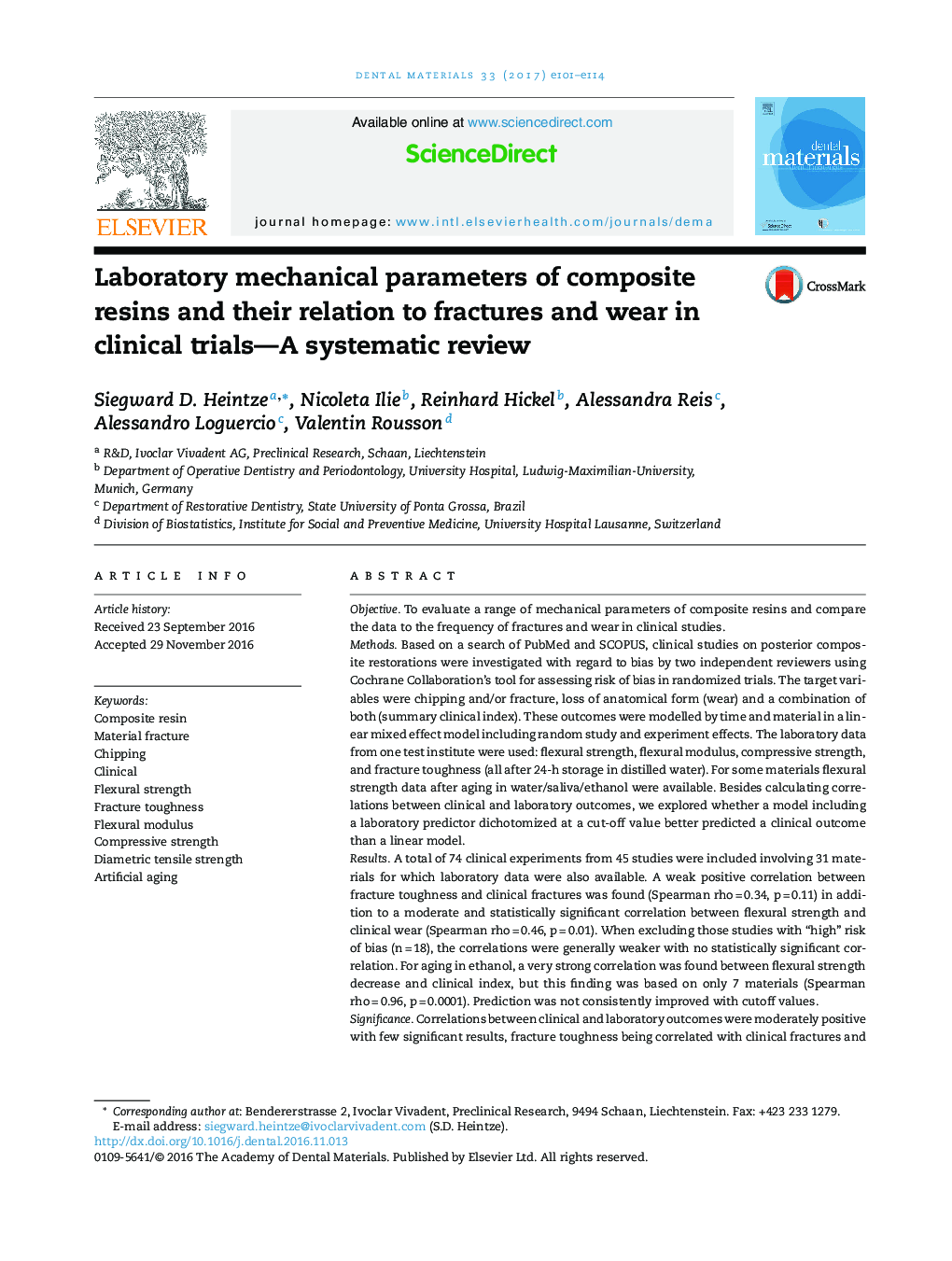| کد مقاله | کد نشریه | سال انتشار | مقاله انگلیسی | نسخه تمام متن |
|---|---|---|---|---|
| 5432996 | 1398051 | 2017 | 14 صفحه PDF | دانلود رایگان |
ObjectiveTo evaluate a range of mechanical parameters of composite resins and compare the data to the frequency of fractures and wear in clinical studies.MethodsBased on a search of PubMed and SCOPUS, clinical studies on posterior composite restorations were investigated with regard to bias by two independent reviewers using Cochrane Collaboration's tool for assessing risk of bias in randomized trials. The target variables were chipping and/or fracture, loss of anatomical form (wear) and a combination of both (summary clinical index). These outcomes were modelled by time and material in a linear mixed effect model including random study and experiment effects. The laboratory data from one test institute were used: flexural strength, flexural modulus, compressive strength, and fracture toughness (all after 24-h storage in distilled water). For some materials flexural strength data after aging in water/saliva/ethanol were available. Besides calculating correlations between clinical and laboratory outcomes, we explored whether a model including a laboratory predictor dichotomized at a cut-off value better predicted a clinical outcome than a linear model.ResultsA total of 74 clinical experiments from 45 studies were included involving 31 materials for which laboratory data were also available. A weak positive correlation between fracture toughness and clinical fractures was found (Spearman rho = 0.34, p = 0.11) in addition to a moderate and statistically significant correlation between flexural strength and clinical wear (Spearman rho = 0.46, p = 0.01). When excluding those studies with “high” risk of bias (n = 18), the correlations were generally weaker with no statistically significant correlation. For aging in ethanol, a very strong correlation was found between flexural strength decrease and clinical index, but this finding was based on only 7 materials (Spearman rho = 0.96, p = 0.0001). Prediction was not consistently improved with cutoff values.SignificanceCorrelations between clinical and laboratory outcomes were moderately positive with few significant results, fracture toughness being correlated with clinical fractures and flexural strength with clinical wear. Whether artificial aging enhances the prognostic value needs further investigations.
Journal: Dental Materials - Volume 33, Issue 3, March 2017, Pages e101-e114
